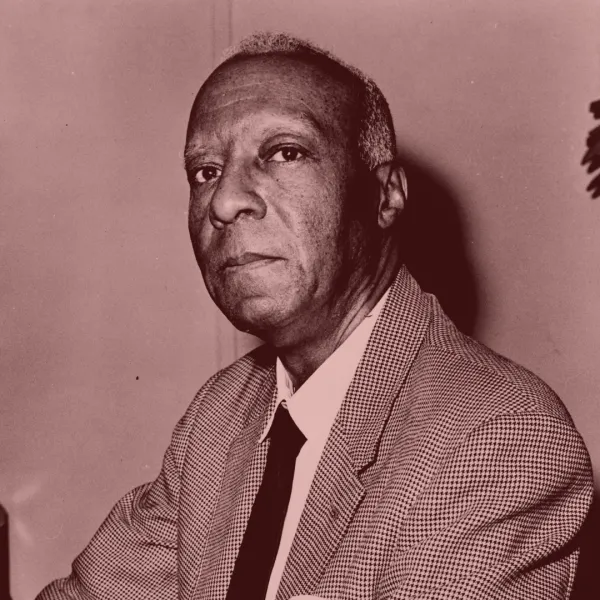Few labor leaders have fought for the kind of radical progress that Asa Philip Randolph dedicated his life to. Born in 1889 in Crescent City, Florida to a minister and seamstress, Randolph got his start in the labor movement in 1911 when he moved to New York and was introduced to socialist politics through studying the Industrial Workers of the World. After a few years he opened a job training office for Black southern migrants with a likeminded friend, Chandler Owen, and unionized a group of elevator operators. By 1917 he had founded The Messenger, an esteemed socialist magazine interested in economic liberation, integration, and anti-war politics, and by 1919 he had become president of the National Brotherhood of Workers of America, the largest Black trade union in existence at the time.

The crowning achievement of Randolph’s career came when he spoke to an audience of Black sleeping car porters in Chicago employed by the Pullman Company. Porters were responsible for serving overnight rail passengers, but the working conditions faced by Black workers were grueling; they were underpaid, forced to work longer hours, and subjected to racial violence. Randolph agreed to help organize and unionize the porters, and quickly became president of the most successful Black labor union in history, the Brotherhood of Sleeping Car Porters.
"The essence of trade unionism is uplift. The labor movement traditionally has been the haven for the dispossessed, the despised, the neglected, the downtrodden, and the poor."
Due to the Pullman Company’s willingness to fire those who joined the BSCP and the American Federation of Labor’s initial resistance to charter a Black labor union, it took 12 years from the formation of the BSCP to arrive at a member bargained contract with the Pullman Company. However, the porters were ultimately victorious and agreed to a contract that raised wages, limited monthly working hours, and established the right to a hearing before discharge. The BSCP was also crucial to the Roosevelt administration amending the Railway Labor Act, which granted federal legal protections to porters in 1934.
Under Randolph’s leadership, the BSCP radically shifted the labor movement and forced major players like the AFL to reckon with their racism and segregationist positions. It became the first Black labor union to be chartered by the AFL and it maintained its affiliation to the AFL through the establishment of the AFL-CIO. The BSCP still exists today, although it’s now known as the Transportation Communications Union/IAM, which currently represents 35,000 workers, many of whom remain in the railway industry.
Randolph’s leadership in the labor movement ran parallel to his civil rights activism that included playing a major role in the establishment of the Fair Employment Practices Committee which banned racial discrimination in all industries pertaining to the World War II effort. He was also instrumental in the fight to integrate schools and in the organization of the March on Washington in 1963.
After a lifetime of activism, A. Philip Randolph passed away at the age of 90 in 1979, forever leaving his indelible mark on the labor movement and the fight for racial justice.
